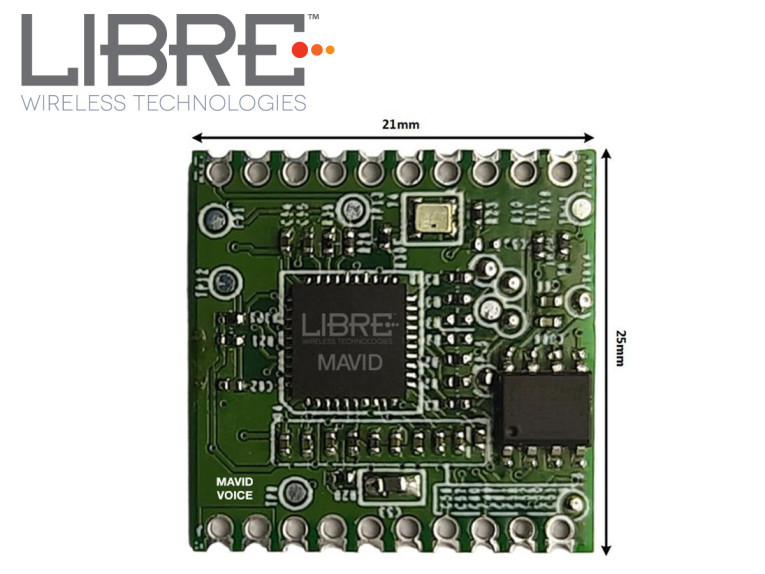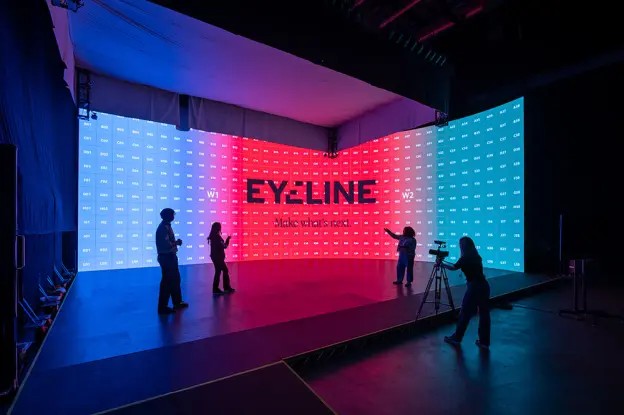The era of voice control is no longer a futuristic concept; it’s a daily reality. Millions of users interact with voice assistants like Alexa, Google Assistant, and Siri through smart speakers and mobile devices. However, for the vast majority of device manufacturers, integrating high-quality, reliable voice control into their products has been a formidable challenge, requiring deep expertise in acoustic engineering, hardware design, and complex software integration. This high barrier to entry has traditionally limited sophisticated voice capabilities to tech giants. Now, a paradigm shift is underway. The latest AI Audio / Speakers News reveals the rise of comprehensive, turnkey wireless voice AI solutions. These integrated platforms are democratizing voice technology, empowering manufacturers of all sizes to embed advanced voice AI into a new generation of connected devices, fundamentally reshaping the landscape of the smart home and the Internet of Things (IoT).
The New Blueprint for Voice Integration: From Components to Complete Solutions
The journey from a spoken command to a device action is incredibly complex, involving a sophisticated chain of hardware and software components working in perfect harmony. Historically, product developers had to assemble this chain piece by piece. The new generation of voice AI platforms changes this by bundling these critical elements into a single, pre-optimized module, dramatically simplifying the development process. This evolution is a central theme in recent Smart Home AI News and is crucial for understanding the future of connected living.
Breaking Down the Technology Stack
A modern voice AI solution is a marvel of engineering, integrating several key layers to capture, process, and understand human speech, even in noisy environments.
The Hardware Foundation: At the core is a carefully engineered hardware module. This isn’t just a single chip but a system-on-a-chip (SoC) or system-in-package (SiP) that includes:
- Microphone Arrays: Instead of a single microphone, these solutions use multiple, high-fidelity MEMS (Micro-Electro-Mechanical Systems) microphones. This array enables advanced techniques like beamforming, which electronically “steers” the listening focus towards the person speaking, and Acoustic Echo Cancellation (AEC), which prevents the device’s own audio output (like music or a response) from being picked up as a new command. This is essential for far-field voice pickup, allowing a user to be heard clearly from across a room.
- Audio Digital Signal Processors (DSPs): These specialized processors are the unsung heroes of voice AI. They run complex algorithms to clean up the raw audio signal from the microphones, filtering out background noise like a humming air conditioner or a television. This pre-processing is vital for ensuring the wake word engine and the cloud-based natural language processing services receive a clean, intelligible signal. This local processing is a key trend in AI Edge Devices News.
- Wireless Connectivity: Integrated Wi-Fi and Bluetooth radios provide the essential link to the internet and other devices, enabling communication with cloud services and local control of other smart gadgets.
The Software and AI Layer
Hardware is only half the battle. The software stack running on these platforms is what brings the voice experience to life.
- Wake Word Engine: This is a lightweight, highly efficient piece of software that runs constantly on the device’s processor. Its sole job is to listen for a specific phrase, like “Alexa” or “Hey Google.” By handling this task locally, or “on the edge,” the device conserves power and only activates its full processing and internet capabilities when needed, a crucial aspect of modern AI Assistants News.
- Cloud API Integration: Once the wake word is detected, the platform securely connects to a major cloud service like Amazon’s Alexa Voice Service (AVS) or Google Assistant. The recorded command is sent for powerful Natural Language Processing (NLP), where the intent of the user’s request is deciphered.
- Software Development Kits (SDKs): This is the key that unlocks the platform’s power for developers. A comprehensive SDK provides pre-built libraries and simple Application Programming Interfaces (APIs) that abstract away the complexity of audio processing and cloud communication. A developer can focus on their product’s unique features, using simple code to link voice commands like “set the temperature to 72 degrees” to the device’s core functions. This empowers a new wave of hardware creators, a topic often covered in AI Tools for Creators News.
Lowering the Barrier: Why Turnkey Solutions are a Game-Changer for OEMs
The shift from a do-it-yourself (DIY) component-based approach to using pre-integrated, turnkey solutions represents a fundamental change in how smart devices are created. This transition is accelerating innovation across countless product categories, from Smart Appliances News to AI Lighting Gadgets News, by making advanced technology accessible and affordable.

The Old Way: The Challenges of a Bespoke Approach
Previously, a company wanting to build a voice-controlled product faced a daunting, resource-intensive process. They would need to:
- Source and Integrate Components: Select and purchase individual microphones, DSPs, and wireless chips from different vendors.
- Engage in Complex Hardware Design: Design a custom printed circuit board (PCB), paying meticulous attention to microphone placement and signal integrity to avoid electronic interference.
- Develop or License Software: Write low-level drivers, license a wake word engine, and build a robust connection to a cloud voice service.
- Perform Extensive Audio Tuning: Hire specialized audio engineers to spend months in an anechoic chamber, tuning the AEC and noise reduction algorithms for their specific product enclosure.
- Undergo Lengthy Certification: Navigate the rigorous and expensive technical certification processes required by Amazon and Google to ensure their device meets strict performance standards.
This multi-year, multi-million dollar effort was simply out of reach for most small and medium-sized enterprises (SMEs).
The New Way: The Benefits of an Integrated Platform
Turnkey voice AI platforms eliminate the majority of these hurdles. By providing a pre-certified, pre-tuned module, they offer compelling advantages:
- Drastically Reduced Time-to-Market: Development cycles can be cut from 18-24 months down to as little as 6 months. This agility is critical in the fast-paced consumer electronics market.
- Lower R&D Costs: Companies avoid the massive upfront investment in hiring specialized engineering teams and purchasing expensive testing equipment.
- Guaranteed Performance: The modules are designed by audio experts and are often pre-certified by voice service providers, removing the performance risk and certification headaches from the OEM.
- Focus on Core Competency: A smart appliance manufacturer can focus on what they do best—building great appliances—rather than trying to become experts in far-field voice technology.
Real-World Scenario: The Smart Robotic Vacuum
Consider a startup in the Robotics Vacuum News space that wants to add premium voice control to its next-gen product. Using the old approach, they would be bogged down in audio engineering. With a new turnkey solution, they can purchase an “AVS-certified” voice module. Their engineering team uses the provided SDK to integrate commands like “tell the robot to clean the kitchen” directly with their navigation and cleaning logic. They can now focus their R&D on improving their core mapping algorithms and battery life, while still delivering a best-in-class voice experience to their customers.
Beyond the Smart Speaker: Voice Control in Everything
The most profound impact of these accessible voice AI platforms is the proliferation of voice control into a vast array of devices far beyond the typical smart speaker or display. This trend is a cornerstone of current AI Sensors & IoT News, as voice becomes the most natural user interface for the ambient computing environment of the future.
Expanding the Reach of Voice AI
We are seeing voice being embedded in products where it was previously impractical. This includes smart thermostats, light switches, ceiling fans, and even kitchen faucets. This expansion has significant implications for niche markets. In AI Pet Tech News, we see voice-activated pet feeders that can dispense food on command. For accessibility, these advancements are life-changing, enabling users with physical disabilities to control their environment with ease, a major story in AI for Accessibility Devices News.

The Critical Role of Edge AI
A parallel trend fueling this revolution is the growth of Edge AI. Instead of relying on the cloud for every single computation, more intelligence is being pushed onto the device itself. The powerful processors in modern voice AI modules can do more than just listen for a wake word. They can be trained to understand and process a set of local commands (e.g., “turn on,” “turn off,” “volume up”) without needing an internet connection. This provides three key benefits:
- Lower Latency: Responses to simple, local commands are instantaneous.
- Enhanced Privacy: Sensitive audio data doesn’t need to leave the home for basic functions.
- Offline Reliability: The device’s core voice functions still work even if the Wi-Fi goes down.
This on-device processing is a major topic in AI Security Gadgets News, as it reduces the attack surface for potential hackers.
The Future: Multi-Assistant Devices and Custom Assistants
These platforms also facilitate more advanced voice ecosystems. We are already seeing high-end audio products that offer users a choice between Alexa and Google Assistant on the same device. Turnkey solutions make this multi-assistant capability easier to implement. Looking further ahead, they provide the foundational technology for brands to create their own custom voice assistants. A company in the Autonomous Vehicles News sector could use such a platform as the basis for a unique in-car assistant that controls navigation and infotainment, reinforcing their brand identity without having to build the entire underlying audio processing stack from scratch.
Navigating the New Landscape: Best Practices for Device Makers
While turnkey voice AI solutions simplify development, they are not a magic bullet. To create a truly successful voice-enabled product, manufacturers must still make strategic decisions and follow best practices in design and implementation.

Choosing the Right Platform
Not all platforms are created equal. When selecting a solution, developers should consider:
- Ecosystem and Certification: Does the module support the target voice assistants? Is it already pre-certified, or will that be an additional step?
- Hardware Specifications: Evaluate the module’s form factor, power consumption, and audio capabilities. A solution for a large smart refrigerator will have different requirements than one for a small wearable device, a key consideration in Wearables News.
- Software Flexibility and Support: How robust is the SDK? Does it allow for deep customization of the user experience? What level of technical support does the platform provider offer?
Common Pitfalls to Avoid
Integrating a voice module is just the first step. To ensure a high-quality end product, avoid these common mistakes:
- Poor Acoustic Design: The physical design of the product is paramount. Placing microphones behind thick plastic, next to a noisy motor, or too close to a speaker will cripple the performance of even the most advanced voice platform. Industrial designers must work closely with engineers from the start.
- Ignoring the Voice User Experience (VUX): A clunky, unintuitive voice interface will frustrate users. Commands should be natural, and the device should provide clear feedback (e.g., a light, a chime) to confirm it has heard and understood the request.
- Overlooking Security: Any connected device is a potential security risk. It is critical to choose a platform with a strong security framework, including encrypted communications, secure boot, and a clear process for delivering over-the-air (OTA) security updates.
Conclusion: A New Era of Voice-First Innovation
The emergence of powerful, integrated, and accessible wireless voice AI platforms marks a pivotal moment in the evolution of the smart device industry. By abstracting away the immense complexity of audio engineering and AI integration, these solutions are effectively democratizing voice technology. This shift dramatically lowers the cost and time required to bring voice-enabled products to market, fueling a wave of innovation across a spectrum of industries, from AI Kitchen Gadgets News to AI Fitness Devices News. For manufacturers, the challenge is no longer about the technical feasibility of adding voice but about the creativity of the application. The focus can now shift from low-level implementation to designing compelling, intuitive, and genuinely useful voice-first experiences that will define the next generation of smart, connected living.










